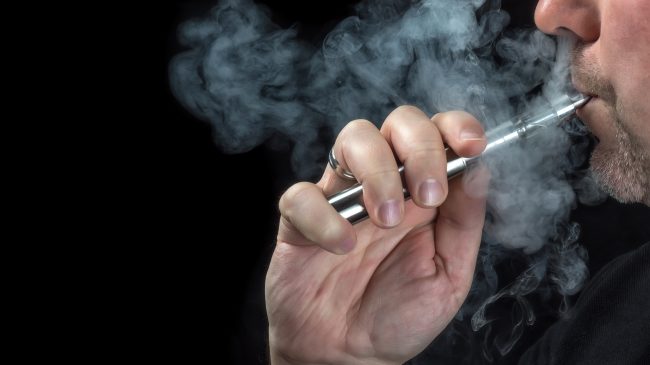Food and Drug Administration Commissioner Scott Gottlieb is threatening “unprecedented” action against America’s most popular tool to quit smoking.
Cheered on by a cacophony of moral entrepreneurs, an increasingly hysterical FDA is lunging towards policies that will cripple the e-cigarette industry, which is now the biggest challenger to traditional cigarettes.
The trigger for Gottlieb’s ire is recently released data from the 2018 National Youth Tobacco Survey showing a surge in teen vaping. The percentage of high school students who vaped at least once in the past 30-days jumped from 11.7 percent in 2017 to 20.8 percent in 2018.
Gottlieb fears kids who start vaping nicotine will become addicted, altering their brain development priming them for future, more dangerous addictions and that e-cigarettes may act as a gateway to smoking.
To be clear, there is as of yet no epidemiological evidence to suggest nicotine harms teenage brains in the way Gottlieb describes. His intention to prevent minors from developing a nicotine addiction is, of course, noble. But claiming that occasional or even regular vaping is just a few steps short of developing alcoholism or a drug addiction strains credibility.
As for the gateway effect, a recent study cited by Gottlieb suggesting kids who vape are more likely to progress to smoking than kids who don’t carries a rather important caveat: “We cannot establish causal relations or rule out the possibility of residual confounding by underlying risk-taking propensities.” Simply put, like every other study conducted on this topic, the authors cannot establish a causal pathway from vaping to smoking. Claims of a gateway from vaping to smoking are about as convincing as they were for marijuana being a precursor to heroin (which is to say, not convincing at all).
In essence, the FDA is planning a massive regulatory onslaught against products that are significantly safer than cigarettes based on an unproven hypothesis and an alleged gateway that is as poorly defined as it is elusive.
While the uptick in youth vaping is concerning, the headline figures obscure the reality of teen tobacco use. The percentage of teens who vape regularly is 5.7 percent, up from previous years but hardly the basis for a national panic. More importantly, since 2011 when e-cigarettes started becoming popular, teen smoking has fallen from 15.8 percent to 8.1 percent. When we look at kids who smoked cigarettes on 20 or more days, smoking among high-schoolers was just 1.8 percent in 2018. The story of teen smoking in recent years is not one of failure, but of tremendous success.
No one wants to see kids using e-cigarettes, just like they don’t want kids to be using alcohol or marijuana. But unlike alcohol or marijuana, e-cigarettes offer a life-saving alternative to the 34 million adults who still smoke.
Not only are e-cigarettes 95 percent less hazardous than traditional cigarettes, they are also effective at helping smokers quit. In January, the New England Journal of Medicine published a study which made headlines across the world showing e-cigarettes are almost twice as effective at helping smokers quit than traditional nicotine replacement therapies.
According to researchers at Georgetown University, up to 6.6 million lives could be saved if vaping replaces smoking in the next decade. Gottlieb himself has said that if every smoker in America switched to e-cigarettes, it would be a significant win for public health.
Almost half a million Americans die from smoking every year, nearly seven times the number who died from opioid overdoses in 2017. But to this day there is no information on FDA’s website making clear the benefits of switching from smoking to vaping.
Instead of encouraging adult smokers to vape, Gottlieb is proposing to limit adults’ access to these products based on one year’s worth of data — which, while troubling, doesn’t come close to justifying the near-destruction of an industry that is creating jobs by making it easier for smokers to quit. The measure of good policy is not signaling how much you care, but whether it passes the cold, bloodless trials of cost-benefit analysis.
FDA has a long and inglorious history of excessive regulation costing lives. The destruction of the vaping industry via regulatory barriers, flavor bans, and censorship about their benefits would make the errors of the past pale in comparison; the tragedy is that the people who will be most affected won’t be around to complain about it, and those who introduce it won’t be in office to be held accountable.
This column first appeared in the Washington Examiner.

